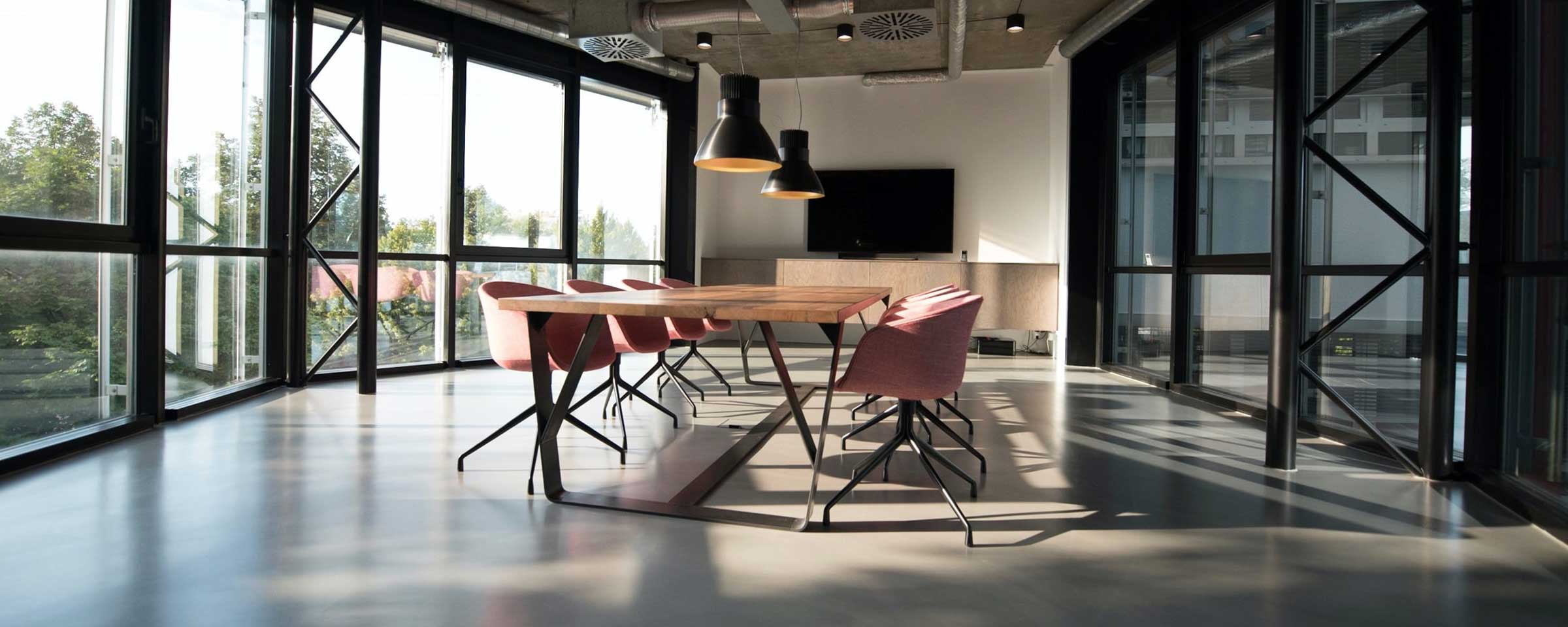
Like a lot of companies, lockdown for my team and me meant a massive change in office locations. Overnight, we went from a handful of offices to 500 as we along with our peers decamped to our homes. For all of us this has taken some getting used to, but particularly for professional service industries like legal where co-location – even with globally distributed teams – has been the norm of how we work.
That’s because as services companies, our offices aren’t just where we work, but a large component of the offering we bring to our clients, with our physical spaces reinforcing our business’s unique brands and allowing us to develop cultures of excellence.
The last few months have furthered the perennial debate on the future of the office while at the same time putting a spotlight on what’s necessary to make offices work: not “just” the physical location, but the enabling model that underlies them. In the physical world, the elements that enable service companies to operate are natural to the point of invisibility. In the virtual world, this model requires more active attention to replicate. However, it is the only way you can deliver client outputs and outcomes at a pace and quality consistent with or exceeding pre-covid levels. Depending on how well your company has and can continue to do at rebuilding this model will be the marker of whether you’ll be running back to the office as soon as it’s safe or considering long term changes to how and where you work.
While the enabling model around your business is everything that allows you to deliver your services, the last few months have taught us to focus on a few key areas that ensured immediate business continuity and, long-term, allow us to rethink our approach to offices:
Process mapping and design are your allies here. Whatever work you do, you should start by mapping out how you currently handle it, from here you can design a process around this to optimize it with continual inspection and adaptation of it.
Process design means that teams aren't just individuals performing their tasks separately, but a collection of carefully designed actions, workflows, and interactions.
For example, rather than the mess of emails, phone calls, and instant messaging, our team uses tools for work intake and allocation. These allow us to not only structure intake and ensure the completeness of requests, but also triage requests based on urgency, team member skills, and capacity. Tools such as these become a place where team members can share knowledge that can be reutilized and to share visibility into what everyone is working on.
This technology enables a data architecture that allows for standardized operating metrics, enables SLA frameworks, provides visibility to demand patterns, and supports predictive insights, all of which provide the management the tools to ensure effectiveness. All the more essential when managers can no longer walk across the aisle for real-time intervention.
For me and my team, in moving to remote working, these provided a baseline for remote collaboration. By knowing how we currently handled work, how the members of the team interacted, and what "normal" looked like in performance indicators.
Today, a cloud-first technology infrastructure enables a hardened security infrastructure far more secure than any individual services company can put in place itself. Similarly, taking a comprehensive approach to remotely protecting your team members’ technology with network firewalls, device management, and policy setting is essential.
Our offices aren't just where we work, they're where we laugh, learn, and share our accomplishments. In switching from physical offices, a key concern isn't just about maintaining high-quality client output but the culture to match.
The work you do in your offices doesn’t happen in a vacuum. A large part of physical offices and more specifically the clustering of service companies and their clients in the same areas is the experience that this gives customers. There are so many things that are easier from this perspective when you’re face to face: meeting with groups of client stakeholders to discuss a new project, workshops on approaches to problems, and even just general relationship building.
There are two things to focus on here:
For us all, a lot and very little has changed in the last few months. Processes, culture, and infrastructure built for physical proximity helped us make the transition to remote working and became even more critical in managing that work.
We believe that the pendulum of the future will swing back from a purely virtual model to a hybrid. We may be craving the togetherness and dedicated space for work of the office, but we don't want that to come at the loss of the flexibility that we've had to balance work and life. This model will mean greater flexibility for work-from-home, but with a physical presence to renew human social interactions and teaming that can only come from in-person interactions.
With the right operating infrastructure in place across process, data, infrastructure, expertise and culture; and with an ecosystem supporting delivery of a modern customer experience – this new hybrid model will thrive, evolve and likely dominate. But without those things in place – we can expect a ground-hog day of failed remote working models, where culture, connectivity, and effectiveness will again be subject to a rapidly declining half-life.
—